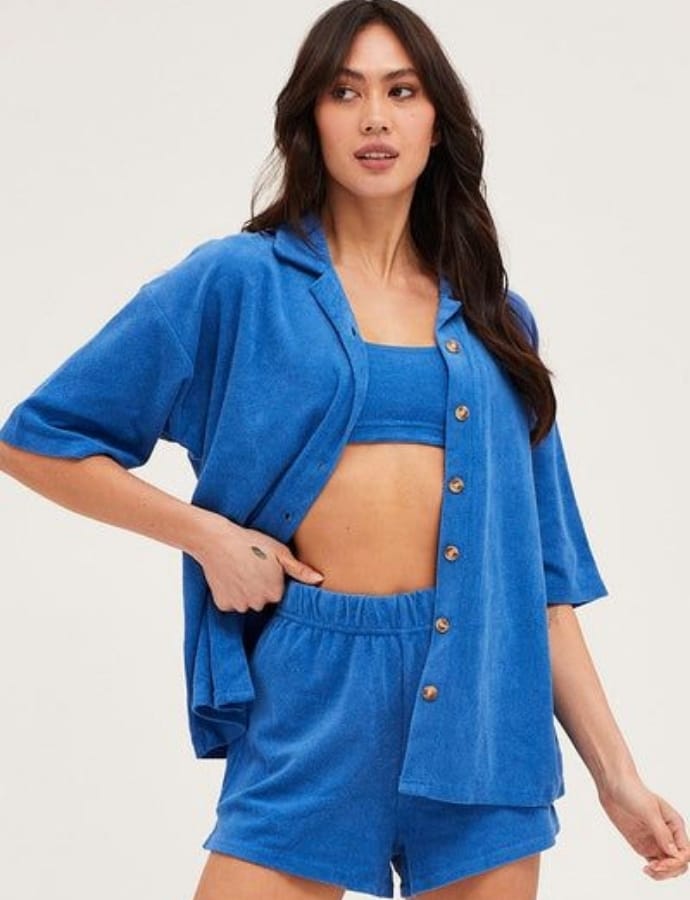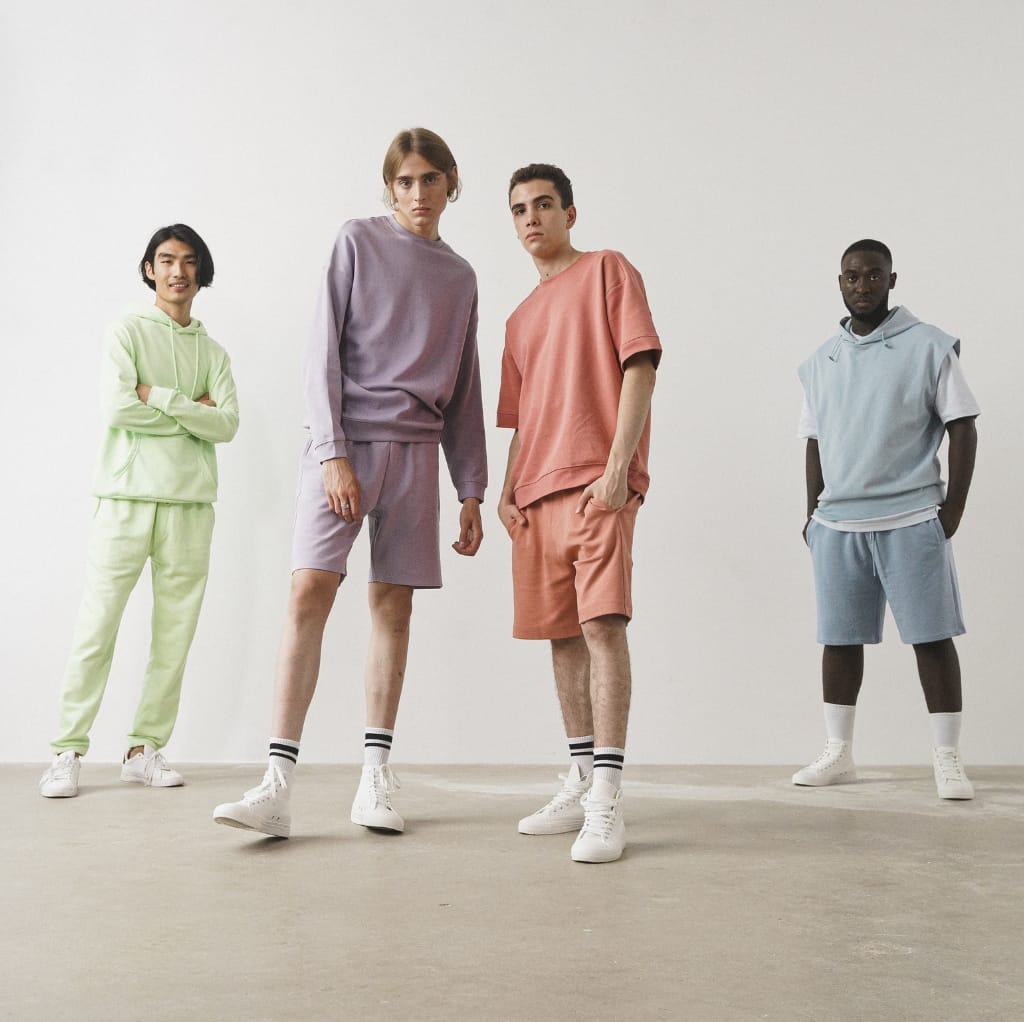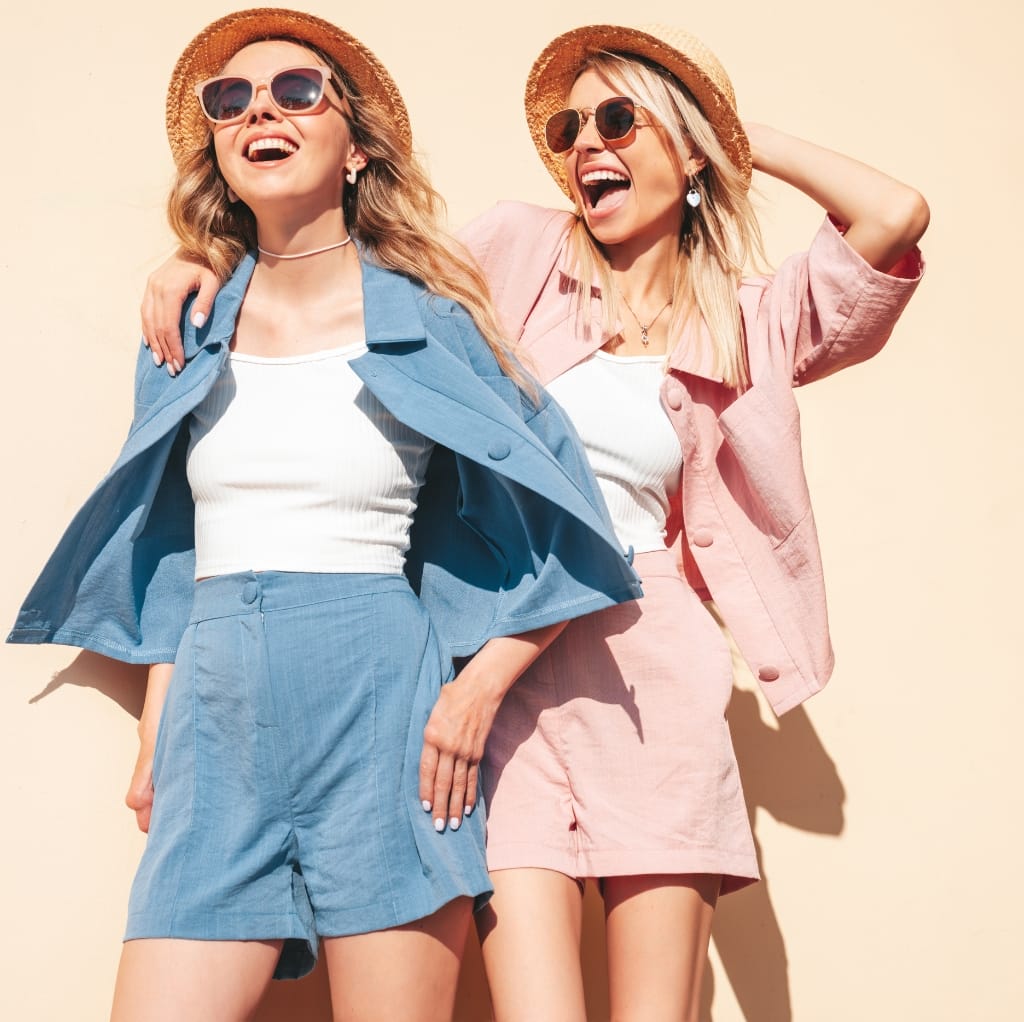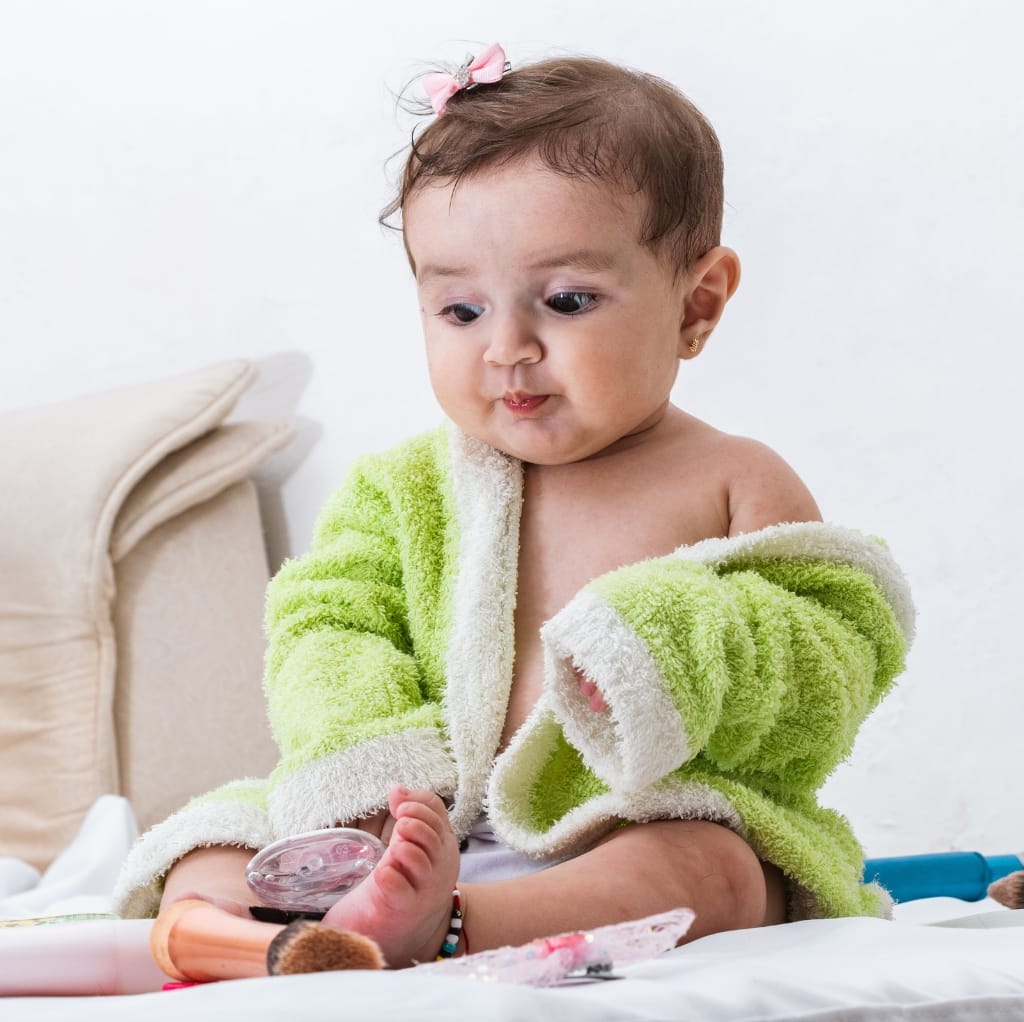Whether you wore tiny terry rompers as a child or wrapped up in a thick bathrobe after a shower, that looped fabric has always whispered comfort to us. Lately, however, the same plush weave has escaped the bathroom and boldly climbed onto catwalks, beach strolls, and even minimalist living-room shelves. So, what sparked this fabric facelift? Why do designers and everyday shoppers alike keep raving about Terry Cloth trends right now?
The cloth is no longer prized only for quick-drying absorbency or snug warmth; it has morphed into an easy-going style marker that also nods toward greener habits. This revival reveals a collective craving for soft touch, roomy silhouettes, and pieces that slide smoothly between leisure and public life.
Join us as we pull apart the loops of the Terry Cloth phenomenon and see exactly why it has woven itself into the modern moment.
Table of contents
- Understanding the Basics of Terry Cloth
- The Rise of Terry Cloth in High Fashion
- How Streetwear Embraced Terry Cloth Trends
- The Role of Celebrities and Influencers
- Terry Cloth Trends in Summer Fashion
- Terry Cloth in Men’s Fashion
- Sustainability and Terry Cloth Trends
- Home Decor and Terry Cloth Popularity
- Color Trends in Terry Cloth Fashion
- The Versatility of Terry Cloth
- Terry Cloth in Kids’ and Babywear
- Conclusion
- FAQs
Understanding the Basics of Terry Cloth
Terry fabric’s cloth consists of raised loops that trap moisture and allow rapid absorption. While pure cotton remains the standard, many modern styles now feature blended synthetic yarns. Praised for both plush feel and thirsty nature, the weave has long dominated towels, bathrobes, and nursery gear.
Yet todays terry-cloth story feels fresher. Designers and labels have pulled the loops off the bathroom shelf and onto unexpected runways. No longer confined to pools and spas, the cloth now drapes over streetwear fits and luxury sets.
The attraction is simple: comfort, memory, and everyday utility stitched into one fabric.
The Rise of Terry Cloth in High Fashion
When labels such as Prada and Stella McCartney brought terry cloth into the spotlight, eyes across the industry turned. No longer simply lounge material, the textile slid into the realm of luxe design. It draped over handbags, tailored blazers, and full runway looks.
Crafted versions kept the familiar sponge feel but refined the silhouette. By matching the fabric with sharp lines and bold accents, creators showed softness could command attention.
This pivot was more than a gimmick. It positioned terry cloth as a choice for the fashion-forward rather than merely practical.

How Streetwear Embraced Terry Cloth Trends
Streetwear quickly seized the new momentum and pushed terry cloth trends even further. Bright matching sets, roomy shorts, and cropped sweats flooded sidewalks and feeds alike. Influencers spinning looks on Instagram and TikTok sent the style skyward.
The appeal is simple. Terry adds texture without weight, moves with the body, and breathes in shifting weather.
Demand sparked a feedback loop. Everyday wearers snapped it up, brands followed suit, and shelves brimmed with fresh cut and color. The trend snowballed.

The Role of Celebrities and Influencers
Celebrity lifestyles routinely shape what ordinary shoppers wear, and terrycloth is no exception. Icons such as Kendall Jenner, Rihanna, and Hailey Bieber have flashed on social media in plush terry sets. Almost overnight, their fans copied the look.
When influencers paired the soft outfits with crisp sneakers and delicate gold chains, the style appeared effortless. Viewers realized terrycloth was accessible, not the preserve of runways or only the wealthy.
That steady online exposure locked the fabric into mainstream culture.
Terry Cloth Trends in Summer Fashion
Summer calls for clothes that breathe, and terrycloth fits that need seamlessly. The looped cotton sits lightly on the skin, soaks up humidity, and help keeps wearers cool. It is no wonder the fabric cloth floods store racks from late spring through summer.
Designers offer everything from tiny swimsuits to oversized cover-ups and matching short sets in the material. Pastel sorbets, electric brights, and nods to 1980s beach style abound. The mix feels relaxed yet polished, the kind of easy summer chic shoppers crave.
Terry cloths natural moisture-wicking keeps it comfortable by the pool or hot tub. Pair it with simple slides, and the outfit transfers smoothly to brunch, a lazy stroll, or impromptu travel.

Terry Cloth in Men’s Fashion
What once seemed too soft or simply too casual for menswear is now a quiet pillar of contemporary male style. Picture polo tees, easy sweatshorts, and even smart-casual button-downs, all stitched from that water-absorbent, looped cotton.
Gents embrace it for the same reasons women first did. Terry is breezy on the skin, stretches without fuss, and quietly signals a forward-thinking wardrobe. High-end labels like Fear of God, alongside street giants such as Nike, have rolled out dedicated Terry lines for shoppers who blend luxury with weekend ease.
So a texture once confined to home lounging has skillfully rebranded itself as everyday kit for everyone.
Sustainability and Terry Cloth Trends
Today, chasing greener methods is no longer a luxury extra-it is the rule. Terry cloth happily joins the dance, mostly woven from cotton, a fibre that can be grown and recycled with far less strain on the planet.
Forward-minded brands now turn to organic fibres or pre-consumer cotton waste when making Terry staples. Many pair this with fair wages and transparent workshops. Such moves pull in shoppers who care for both the earth and their look.
By marrying low-impact processes with cloud-soft cotton fabric comfort, Terry cloth shows it is not simply passing fad. It is, quietly, a track toward tomorrows wardrobe.
Home Decor and Terry Cloth Popularity
Once limited to beach robes and sweat gear, Terry cloth is now taking the living room by storm. Designers love its looped pile because it looks relaxed yet feels luxuriously soft. So you will find the fabric on everything from accent pillows and footstools to full-length curtains.
This move into home decor mirrors a larger shift in daily life. More people want rooms that wrap them in warmth instead of stiff minimalism. Terry cloth delivers that sense of ease while still looking polished.
Its muted neutrals, gentle pastels, and inviting texture turn a chilly space into an instant retreat.

Color Trends in Terry Cloth Fashion
Where Terry once arrived in hospital white or nursery blue, fresh dye pots have opened a new color story. Pastel sorbet shades still rule the scene, but daring hues like cobalt, mustard, and fuchsia are stealing attention.
Coordinated sets now arrive in these solid tones, simplifying styling or playful mixing. Tie-dye swirls, bold stripes, and cheeky graphics show the fabric can flex with any mood.
These lively pigments breathe energy into everyday wear, making Terry cloth a year-round favorite.

The Versatility of Terry Cloth
Beyond nostalgia, terry cloth endures because it fits almost anywhere. Toss the hoodie over swim trunks, slide-on loafers for brunch, or lounge in matching sweats while working from home.
Dress the set up with block heels or keep it casual in flip-flops-welcome versatility without planning. It breathes in summer and retains warmth in spring, yet the fabric never feels stiff or clingy.
Texture, ease, and a forgiving silhouette are the quiet reasons terry cloth keeps returning.
Terry Cloth in Kids’ and Babywear
Parents gravitate to terry when outfitting toddlers and infants. The weave is soft enough for delicate skin and stands up to daily spills and scrapes.
Flexible stretch allows wiggling during play or sleep, and quick drying keeps little ones comfortable. Kids trust garments that feel as light as a cloud and parents appreciate that peace of mind.
Brands have rolled out entire collections of baby rompers, bibs, and pajamas cut from fluffy terry cloth, and devoted parents buy the lot. They do it not only because the pieces survive spit-up, diaper leaks, and countless tumbles, but also because that soft pile looks outrageously cute on tiny limbs.
Affection for terry starts in infancy and, remarkably, carries forward into adulthood.

Conclusion
The recent surge in terry cloth appears to confirm that comfort need not entail stylistic compromise. In an age marked by rapid motion and persistent distraction, many consumers actively seek calm. There is thus something uniquely restful about enfolding the body in a fabric that gently caresses skin while also fulfilling aesthetic ambition.
This movement extends far beyond the realm of clothing. It serves as a lifestyle ethos. It prioritizes softness, resource-conscious production, and durability. For these reasons, it seems poised to remain a fixture among the tactile, sustainable choices of discerning shoppers. Read more: Types of Fuzzy Fabric: Why cotton apparel cloth
FAQs
Nostalgia blended with pure ease drives its appeal. Designers tweak the weave into sharp shapes, breathing fresh life into the look.
Absolutely. Light mixes breeze through summer, while cozy layers slide easily under winter coats.
When spun from organic or salvaged cotton, it gives back to the planet.


